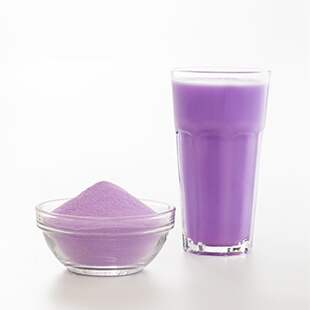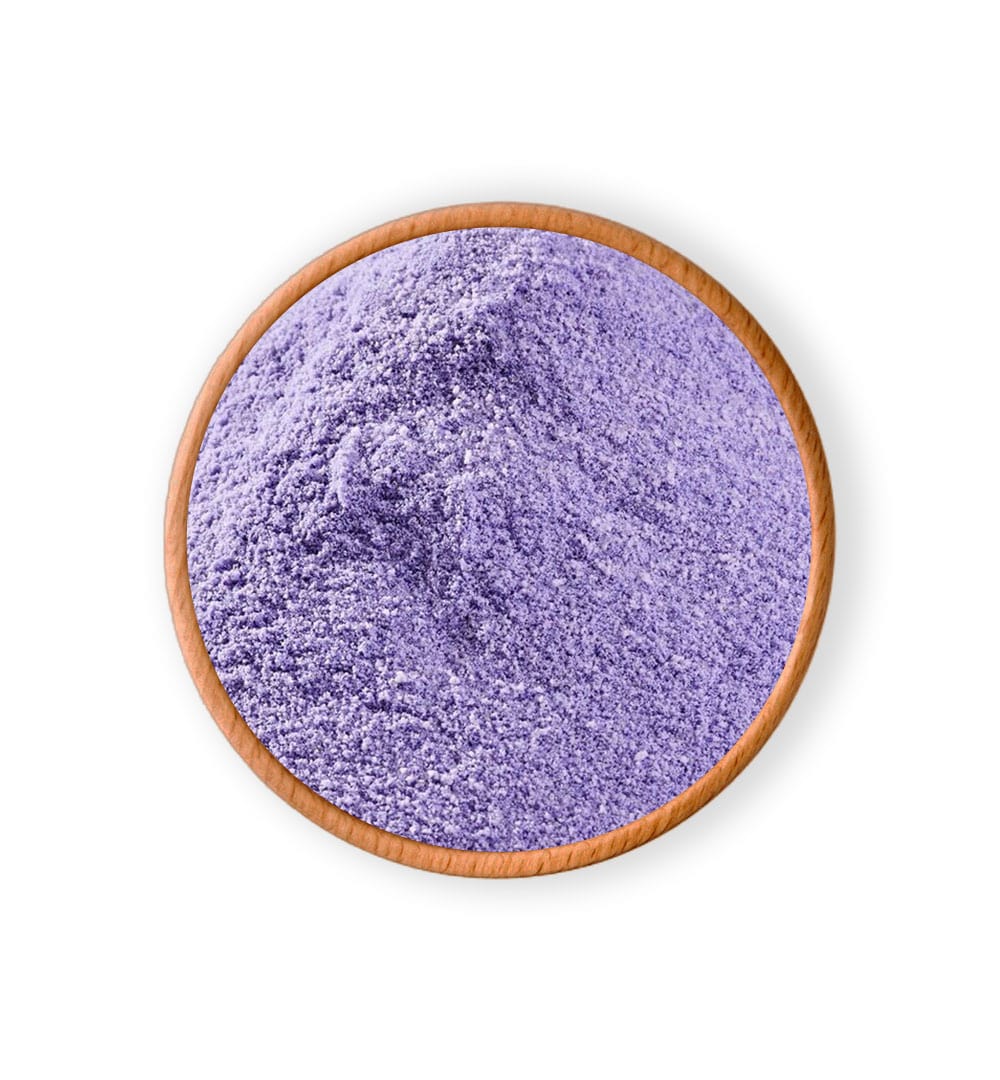The Power of Taro Powder: Nutritional, Culinary, and Cultural Benefits
Introduction Taro powder is an increasingly popular superfood ingredient, celebrated for its unique flavor, vibrant color, and impressive nutrient profile. Derived from the taro root, an ancient crop with roots in Southeast Asia and the Pacific Islands, taro powder offers a versatile option for food enthusiasts and health-conscious individuals alike.
Taro is one of the oldest crops that is now grown in most parts of the world. It was domestic to Southeast Asia over 6,000 years ago. Since then, taro root benefits have spread to various tropical and subtropical regions around the world.
What is Taro Powder?
Taro powder is a type of food ingredient made from the root vegetable known as taro (Colocasia esculenta). taro is a starchy, edible root the taro root is peeled, cooked, mashed, and then dehydrated to produce a fine powder. taro powder is used as a flavoring and thickening agent in various food and beverage applications.
Taro Powder has a delicious floral aroma and is perfect for bubble tea drinks. Originating as a root vegetable , taro has a starchy texture and is great for thick taro beverages and desserts, such as smooth taro bubble teas, milk teas, smoothies, frozen yogurt, and other dessert recipes (try a taro sponge cake).
Cultural Significance The taro root has held cultural importance in regions where it has been cultivated for centuries. Known as "kalo" in Hawaiian culture, taro is considered sacred, symbolizing family and sustenance. Introducing taro powder in your diet honors this heritage, connecting you to traditions where food and community are deeply intertwined.

Notable Qualities of Taro
Taro is a versatile and nutrient-rich root vegetable with several notable features that make it popular in various cuisines and applications. Here are the key features of taro:
Mild, Nutty Flavor: Taro has a unique taste that’s mildly sweet and nutty, often described as a mix of vanilla, coconut, and potato. This flavor makes it versatile in both sweet and savory recipes.
Distinctive Color: Naturally white or pale lavender with purple flecks, taro adds a visually appealing purple hue to dishes, especially when made into powder for drinks and desserts.
Rich Nutritional Profile: Taro is packed with essential nutrients like fiber, potassium, magnesium, and vitamins B6 and C, supporting heart health, immune function, and digestion.
Creamy Texture: Known for its starchy, dense texture, taro becomes creamy when cooked, making it perfect for soups, stews, and desserts like ice cream or puddings.
Culinary Versatility: A popular ingredient in Asian, Pacific Island, and Caribbean cuisine, taro is used in bubble teas, baked goods, stews, curries, and even as a mashed side dish.
Health Benefits: Taro is rich in fiber and antioxidants, which support gut health, lower cholesterol, and reduce inflammation. Its resistant starch content is particularly beneficial for digestion.
Gluten-Free and Vegan: Taro is naturally gluten-free and plant-based, making it ideal for vegan, vegetarian, and gluten-free diets.
Sustainable Crop: As a hardy tropical crop, taro is sustainably grown and serves as a staple food in many cultures, contributing to food security and agricultural sustainability.

Taro Powder Nutrional Profile
Fiber-Rich: Taro powder provides a generous dose of dietary fiber, aiding digestion and helping to regulate blood sugar.
Antioxidants: Rich in polyphenols and flavonoids, taro powder can help neutralize free radicals, supporting cell health and reducing inflammation.
Essential Minerals: Taro is a natural source of potassium, manganese, magnesium, and phosphorus—essential minerals that support heart health, bone strength, and energy levels.
Vitamins B and C: B vitamins in taro powder support brain function and energy, while Vitamin C aids immunity and skin health.

Why Is Taro Powder Popular in Bubble Tea and Other Beverages?
Many people love taro bubble tea for its creamy consistency, flavorful flavor, and ageless appeal. This post will be interesting for those of us who are unfamiliar with the tubular root known as taro.
Taro milk tea is a tea that has been diluted with more milk and other additions than the tea itself. If we disassembled this drink, we would find that it is three-quarters milk, and the remaining quarter is black tea, sugar, and tapioca pearls.
Taro, a starchy root, serves as the tea’s foundation. We have to look at the plant that produces taro to better understand what it is. The common names for Colocasia esculenta (taro) include caladium, dasheen, malango, and elephant ears.
Because it contains taro root, dairy, and black tea, taro milk tea offers several benefits. There is no benefit to the additional ingredients, such as sugar and tapioca pearls. The taro root contains vitamins C, potassium, phosphorus, zinc, thiamin, riboflavin, and niacin, among other minerals.
Added Dietary Fiber: Taro has fiber, which actively contributes to the regulation of our digestive system. Taro has 6.7g of fiber per cup. We need fiber in our diets to prevent constipation, hemorrhoids, reflux, stomach ulcers, and diverticulitis.
Eye Health: A high concentration of carotenoids, such as those found in taro root, slow the advancement of eye conditions such as cataracts and macular degeneration that are caused by age.
The substances beta-carotene, lycopene, lutein, and zeaxanthin are found in carotenoids, which are substances with antioxidant qualities. Zeaxanthin and lutein shield our eyes from damaging blue light, and beta-carotene gets converted into Vitamin A.
Anti-Cancer: Taro root includes a high concentration of quercetin, a plant-based chemical that may reduce cancer risk. Quercetin can also be found in onions, apples, and tea. Quercetin has been demonstrated in animal experiments to promote the destruction of cancer cells and inhibit the growth of several cancer types.
Additionally, the immune boosting properties of taro have been suggested by different studies as well as its ability for reducing inflammation. The taro plant is also rich in antioxidants, which can prevent degenerative and age-related diseases. Taro has been traditionally used as a popular remedy for a variety of health conditions, such as asthma, skin problems, neurological disorders, internal hemorrhaging, pneumonia, and hypertension.

Nutritional Benefits of Taro Powder Taro Root Powder
Thanks to its impressive nutrient profile, adding this vegetable to your diet can come with some serious health benefits. Here are a few of the top taro root benefits.
1. May Promote Weight Loss: Although each serving does contain a hefty chunk of taro root calories, taro can definitely be incorporated into a healthy weight loss diet. It’s particularly rich in fiber, which slows the emptying of the stomach to keep you feeling full between meals.
2. Enhances Heart Health: Cramming 6.7 grams of fiber into a single cup, taro is an awesome addition to a heart-healthy diet. Not only is fiber intake linked to a reduced risk of coronary heart disease, but fiber may also help decrease levels of blood pressure and cholesterol, both of which are major risk factors for heart disease.
Plus, it is loaded with antioxidants, which are beneficial compounds that can help combat free radical damage and protect against disease. Research suggests that upping your intake of antioxidants can reduce inflammation and oxidative stress, which can contribute to heart disease and atherosclerosis, or fatty plaque buildup in the arteries.
3. Supports Blood Sugar Control: A good chunk of the taro root carbs in each serving are classified as fiber and resistant starch, both of which can help support better blood sugar control. In fact, studies show that increasing your intake of fiber can reduce fasting blood sugar levels and hemoglobin A1C, which is a marker of long-term blood sugar control.
4. Improves Digestive Function: Including a variety of high-fiber foods in your diet can have a huge impact on digestive health. Studies show that increased fiber intake can benefit several conditions and may improve symptoms of acid reflux, constipation, hemorrhoids, stomach ulcers and diverticulitis.
5. Good Source of Antioxidants: Taro leaf and root are both excellent sources of antioxidants, including several specific types that have been tied to a lower risk of chronic disease. In some cases, these beneficial plant pigments are also what makes taro purple and provides it with its signature hue.

Versatility in the Kitchen Taro powder’s mild, earthy, and slightly nutty taste makes it a favorite ingredient for both sweet and savory dishes:
Smoothies & Lattes: Add a teaspoon of taro powder for a nutrient-packed, purple-hued drink.
Baked Goods: It’s a favorite in muffins, breads, and cookies, providing a beautiful color and subtle flavor.
Cultural Dishes: Taro is a staple in various cultural cuisines; taro powder brings authentic flavor to dishes like Filipino halo-halo, Hawaiian poi, and Thai desserts.
Dairy-Free Milks and Creamers: Blend it with coconut or almond milk for a delicious taro-flavored milk or creamer.

Health-Boosting Recipes to Try
There are several ways to reap the benefits of taro root by cooking. The best method is boiling this starchy vegetable.
One should avoid eating raw taro root because it contains calcium oxalate crystals that can cause irritation and discomfort. Proper cooking, especially boiling breaks down these crystals and makes the taro safe to eat.
There are several ways to add taro root benefits to your diet. Here are some healthy ways that you can try:
Boiled Or Steamed Taro: You can enjoy boiled taro as a side dish with a sprinkle of salt or dip it in your favorite sauce.
Mashed Taro: Mashed taro with a touch of butter, herbs, or spices will add to a delicious and nutritious side dish.
Taro Soup: The chunks of taro root in soups and stews can enhance the thickness of the soup and provide a unique flavor due to its starchy composition.
Stir-Fried Taro: Stir-frying taro root with other vegetables and proteins makes a quick and nutritious meal. You can add soy sauce, ginger, and garlic for flavor.
Taro Porridge: Cooking taro along with rice in porridge adds a comforting and satisfying element to the dish.
Taro Curries: Taro curries are more popular because they absorb the flavors of the spices and create a flavourful dish.
Taro Smoothie Bowl: Blend taro powder with banana, coconut milk, and a touch of honey for a delicious breakfast.
Purple Taro Latte: Whisk taro powder with warm almond milk and a hint of vanilla for a vibrant, cozy drink.
Taro Pancakes: Add taro powder to your pancake batter for a colorful and nutrient-dense twist.

Where to Buy Taro powder?
Discover the exceptional quality of Taro powder from YANGGE BIOTECH INGREDIENTS, available with a complimentary sample at yanggebiotech.com. Renowned as an industry leader, YANGGE BIOTECH is dedicated to manufacturing and distributing premium-grade dietary supplement ingredients, delivering purity and potency with every product.
Wrapping up, Taro powder is more than just a trendy ingredient—it’s a nutrient-dense, culturally rich superfood that adds beauty and health benefits to everyday recipes. Incorporate taro powder into your meals to enjoy not only its flavor and visual appeal but also a connection to a food tradition rooted in centuries of cultural significance.
Why Choose Yangge Biotech for Taro powder?
Yangge Biotech is your trusted source for premium Taro powder. Here’s why:
Top-Quality Products: Yangge Biotech ensures the highest standards of purity and color consistency, meeting global regulatory standards for food, cosmetics, and textiles.
Sustainable and Ethical: The company is committed to eco-friendly sourcing and responsible agricultural practices, making it the go-to choice for businesses seeking a natural, sustainable colorant.
Customization: Whether you need powder, liquid, or concentrated forms, Yangge offers flexible solutions tailored to your needs.
Certified and Reliable: With certifications like GMP, ISO, and Kosher, you can trust the safety and quality of every batch of Carthamus Red.
Global Reach, Excellent Service: With a strong global presence and exceptional customer support, Yangge Biotech ensures a smooth, hassle-free experience from start to finish.
Discover the vibrant power of Taro powder with Yangge Biotech – where top-notch quality, sustainability, and a customer-first approach come together to elevate your experience!
References:
Belghith Fendri, L., Chaari, F., Maaloul, M., Kallel, F., Abdelkafi, L., Ellouz Chaabouni, S., & Ghribi-Aydi, D. (2016). Wheat bread enrichment by pea and broad bean pods fibers: effect on dough rheology and bread quality. Lebensmittel-Wissenschaft + Technologie, 73, 584-591. http://dx.doi.org/10.1016/j.lwt.2016.06.070
» http://dx.doi.org/10.1016/j.lwt.2016.06.070
Cashman, K. D., & Flynn, A. (1999). Optimal nutrition: calcium, magnesium and phosphorus. The Proceedings of the Nutrition Society, 58(2), 477-487. http://dx.doi.org/10.1017/S0029665199000622 PMid:10466193.
» http://dx.doi.org/10.1017/S0029665199000622
Charoenrein, S., & Preechathammawong, N. (2012). Effect of waxy rice flour and cassava starch on freeze–thaw stability of rice starch gels. Carbohydrate Polymers, 90(2), 1032-1037. http://dx.doi.org/10.1016/j.carbpol.2012.06.038 PMid:22840036.
» http://dx.doi.org/10.1016/j.carbpol.2012.06.038
Codină, G. G., Istrate, A. M., Gontariu, I., & Mironeasa, S. (2019). Rheological Properties of Wheat-Flaxseed Composite Flours Assessed by Mixolab and Their Relation to Quality Features. Foods, 8(8), 333. http://dx.doi.org/10.3390/foods8080333 PMid:31395832.
» http://dx.doi.org/10.3390/foods8080333
Dobraszczyk, B. J., & Morgenstern, M. P. (2003). Rheology and the breadmaking process. Journal of Cereal Science, 38(3), 229-245. http://dx.doi.org/10.1016/S0733-5210(03)00059-6
» http://dx.doi.org/10.1016/S0733-5210(03)00059-6
Dvořáček, V., Bradová, J., Sedláček, T., & Šárka, E. (2019). Relationships among Mixolab rheological properties of isolated starch and white flour and quality of baking products using different wheat cultivars. Journal of Cereal Science, 89, 102801. http://dx.doi.org/10.1016/j.jcs.2019.102801
» http://dx.doi.org/10.1016/j.jcs.2019.102801
Garimella Purna, S. K., Miller, R. A., Seib, P. A., Graybosch, R. A., & Shi, Y. (2011). Volume, texture, and molecular mechanism behind the collapse of bread made with different levels of hard waxy wheat flours. Journal of Cereal Science, 54(1), 37-43. http://dx.doi.org/10.1016/j.jcs.2011.02.008
» http://dx.doi.org/10.1016/j.jcs.2011.02.008
González Victoriano, L., Güemes Vera, N., Soto Simental, S., Hernández, J. P., Quintero Lira, A., & Piloni Martini, J. (2020). Quality properties of doughs and noodles using chayotextle (Sechiem edule) flours. Food Science and Technology, 41(1), 158-166. http://dx.doi.org/10.1590/fst.30219
» http://dx.doi.org/10.1590/fst.30219
Hilary Van Wyk, R., & Oscar Amonsou, E. (2021). Physiochemical and functional properties of albumin and globulin from amadumbe (Colocasia esculenta) corms. Food Science and Technology Ahead of Print. http://dx.doi.org/10.1590/fst.02621
» http://dx.doi.org/10.1590/fst.02621
Himeda, M., Njintang, N. Y., Nguimbou, R. M., Gaiani, C., Scher, J., Balaam, F., & Mbofung, C. M. F. (2012). Physicochemical, rheological and thermal properties of taro (Colocassia esculenta) starch harvested at different maturity stages. International Journal of Biosciences, 2(3), 14-27.
Kim, Y., Huang, W., Zhu, H., & Rayas-Duarte, P. (2009). Spontaneous sourdough processing of Chinese northern-style steamed breads and their volatile compounds. Food Chemistry, 114(2), 685-692. http://dx.doi.org/10.1016/j.foodchem.2008.10.008
» http://dx.doi.org/10.1016/j.foodchem.2008.10.008
Kristiawan, M., Micard, V., Maladira, P., Alchamieh, C., Maigret, J., Réguerre, A.-L., Emin, M. A., & Della Valle, G. (2018). Multi-scale structural changes of starch and proteins during pea flour extrusion. Food Research International, 108, 203-215. http://dx.doi.org/10.1016/j.foodres.2018.03.027 PMid:29735050.
» http://dx.doi.org/10.1016/j.foodres.2018.03.027
Kurek, M. A., & Sokolova, N. (2019). Optimization of bread quality with quinoa flour of different particle size and degree of wheat flour replacement. Food Science and Technology, 40(2), 307-314. http://dx.doi.org/10.1590/fst.38318
» http://dx.doi.org/10.1590/fst.38318
Send Inquiry
Related Industry Knowledge
- Yucca extract to make natural hair shampoo
- Does astaxanthin increase estrogen
- Pure Shilajit UK Natural Benefits
- Organic Hemp Protein Powder for Weight Gain
- Chelated Magnesium: The Amino Acid Benefits
- What Do Antioxidants Do for the Body?
- Explore the Nutritional Value of Butterfly Pea Powder
- What Are Anthocyanins? A Deep Dive into Nature's Vibrant Pigments
- Premium Hydrolyzed Keratin: Optimal Hair & Skin
- Top Sources of Eicosapentaenoic Acid

